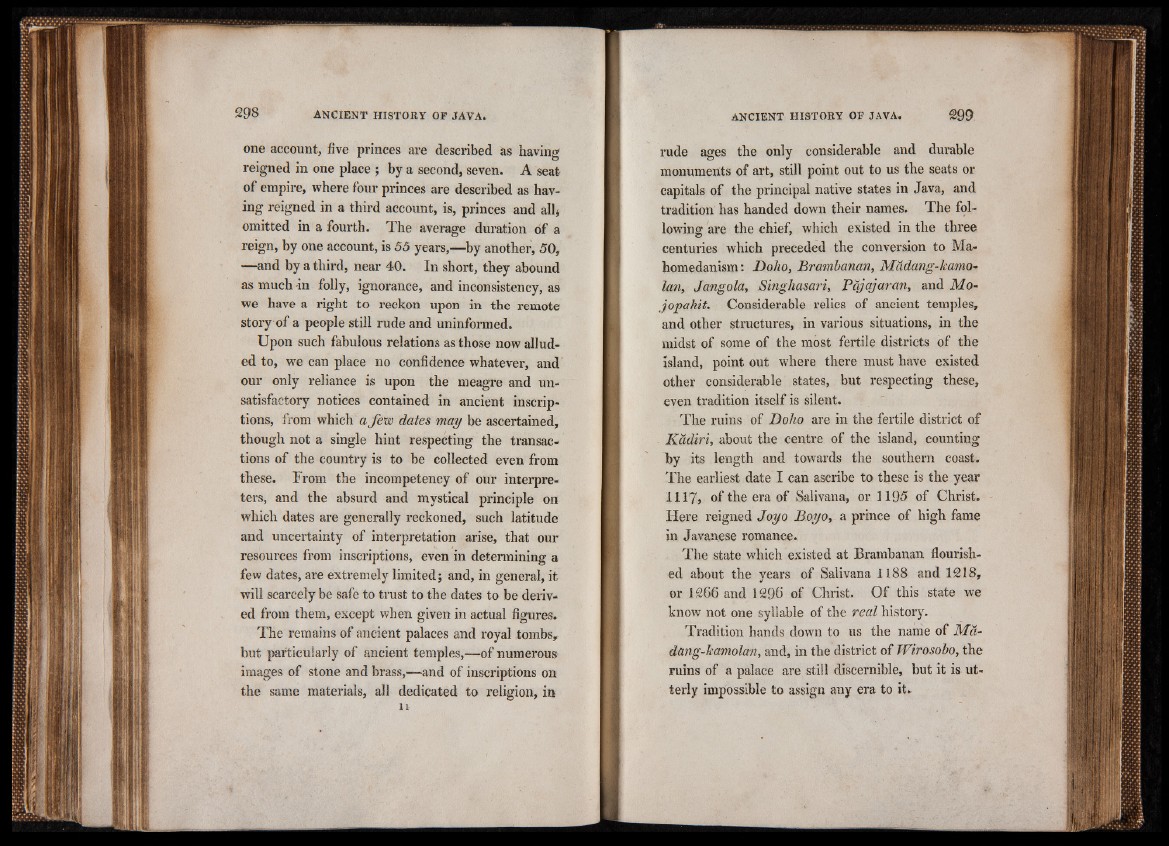
one account, five princes are described as having
reigned in one place ; by a second, seven. A seat
of empire, where four princes are described as having
reigned in a third account, is, princes and all*
omitted in a fourth. The average duration of a
reign, by one account, is 55 years,—-by another, 50,
—and by a third, near 40. In short, they abound
as much in folly, ignorance, and inconsistency, as
we have a right to reckon upon in the remote
story of a people still rude and uninformed.
Upon such fabulous relations as those now alluded
to, we can place no confidence whatever, and
our only reliance is upon the meagre and unsatisfactory
notices contained in ancient inscriptions,
from which a Jew dates may be ascertained,
though not a single hint respecting the transactions
of the country is to be collected even from
these. From the incompetency of our interpreters,
and the absurd and mystical principle on
which dates are generally reckoned, such latitude
and uncertainty of interpretation arise, that our
resources from inscriptions, even in determining a
few dates, are extremely limited; and, in general, it
will scarcely be safe to trust to the dates to be derived
from them, except when given in actual figures.
The remains of ancient palaces and royal tombs,
but particularly of ancient temples,—of numerous
images of stone and brass,—and of inscriptions on
the same materials, all dedicated to religion, in
11
rude ages the only considerable and durable
monuments of art, still point out to us the seats or
capitals of the principal native states in Java, and
tradition has handed down their names. The following;
are the chief, which o ' existed in the three centuries which preceded the conversion to Ma-
homedanism: Doho, Brambanan, Mddang-kamo-
lan, Jangola, Singhasari, Pcijajaran, and Mo-
jopahit. Considerable relics of ancient temples,
and other structures, in various situations, in the
midst of some of the most fertile districts of the
island, point out where there must have existed
other considerable states, but respecting these,
even tradition itself is silent.
The ruins of Doho are in the fertile district of
Kadiri, about the centre of the island, counting
Fy its length and towards the southern coast.
The earliest date I can ascribe to these is the year
1117, of the era of Salivana, or 1195 of Christ.
Here reigned Joyo Boyo, a prince of high fame
in Javanese romance.
The state which existed at Brambanan flourished
about the years of Salivana 1188 and 1218,
or 1266 and 1296 of Christ. Of this state we
know not one syllable of the real history.
Tradition hands down to us the name of Md-
dang-kamolan, and, in the district of Wirosobo, the
ruins of a palace are still discernible, but it is utterly
impossible to assign any era to it.